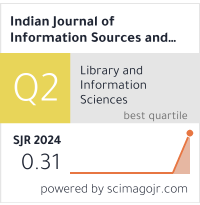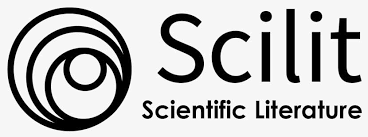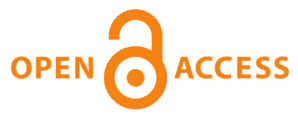Agricultural Informatics: An Overview of Integration of Agricultural Sciences and Information Science
DOI:
https://doi.org/10.51983/ijiss-2020.10.1.2832Keywords:
Information Technology, Computing, Agricultural Informatics, Agro ICT, Environmental Information Sciences, Degrees, InterdisciplinaryAbstract
Information Science is an important field of study with the nature of Interdisciplinary Sciences. It is also called as Applied Sciences. The field also synonymously treated and considered as Informatics in different parts of the globe. The branch holds both practicing natures as well as the characteristics of a field of study. Due to its applicability in other subjects and different areas and new subjects have been created viz. Bio Informatics, Geo Informatics, Health Informatics, etc. Among the domain specific Informatics, one important is Agricultural Informatics. In general, it is considered that the applications of IT and Computing in different branches and subjects, societal areas is Information Science. Thus, the application of Computing Systems, Technologies and IT in the practicing field of agriculture and academic field of agriculture is called Agricultural Informatics or short Agro Informatics. However, the integration of techniques, technologies and methodologies of both the subjects viz. Informatics and Agriculture results in the origin of Agro Informatics. The analysis, management and processing of agricultural and allied data by the Computer and IT Systems may also be called as Agricultural Informatics. We know that Agriculture is dedicated to the production of food, feed, fiber and other products with the process of cultivation not only plants but also domesticated animals by various scientific methods. And, Agricultural Informatics thus dedicated to IT based solutions in complete Agro and allied areas. This research work is conceptual in nature and theoretical and demonstrates various features, functions, stakeholders, evolution, technologies, future of Agro Informatics and related branches as well. The paper also highlighted the basics of Agricultural Sciences and Information Science, to reach the goal and objective of the paper as well.
References
Abbasi, A. Z., Islam, N., & Shaikh, Z. A. (2014). A review of wireless sensors and networks' applications in agriculture. Computer Standards & Interfaces, 36(2), 263-270.
Adão, T., Hruška, J., Pádua, L., Bessa, J., Peres, E., Morais, R., & Sousa, J. J. (2017). Hyperspectral imaging: A review on UAV-based sensors, data processing and applications for agriculture and forestry. Remote Sensing, 9(11), 1110.
Adetunji, K. E., & Joseph, M. K. (2018, August). Development of a Cloud-based Monitoring System using 4duino: Applications in Agriculture. In 2018 International Conference on Advances in Big Data, Computing and Data Communication Systems (icABCD) (pp. 4849-4854). IEEE.
Ahmad, T., Ahmad, S., & Jamshed, M. (2015, October). A knowledge-based Indian agriculture: With cloud ERP arrangement. In 2015 International Conference on Green Computing and Internet of Things (ICGCIoT) (pp. 333-340). IEEE.
Aubert, B. A., Schroeder, A., & Grimaudo, J. (2012). IT as enabler of sustainable farming: An empirical analysis of farmers' adoption decision of precision agriculture technology. Decision Support Systems, 54(1), 510-520.
Babu, S. M., Lakshmi, A. J., & Rao, B. T. (2015, April). A study on cloud-based Internet of Things: CloudIoT. In 2015 global conference on communication technologies (GCCT) (pp. 60-65). IEEE.
Balamurugan, S., Divyabharathi, N., Jayashruthi, K., Bowiya, M., Shermy, R. P., & Shanker, R. (2016). Internet of agriculture: Applying IoT to improve food and farming technology. International Research Journal of Engineering and Technology (IRJET), 3(10), 713-719.
Bauckhage, C., & Kersting, K. (2013). Data mining and pattern recognition in agriculture. KI-Künstliche Intelligenz, 27(4), 313-324.
Channe, H., Kothari, S., & Kadam, D. (2015). Multidisciplinary model for smart agriculture using the internet of things (IoT), sensors, cloud-computing, mobile-computing & big-data analysis. Int. J. Computer Technology & Applications, 6(3), 374-382.
Gill, S. S., Chana, I., & Buyya, R. (2017). IoT based agriculture as a cloud and big data service: the beginning of digital India. Journal of Organizational and End-User Computing (JOEUC), 29(4), 1-23.
Gómez-Chabla, R., Real-Avilés, K., Morán, C., Grijalva, P., & Recalde, T. (2019, January). IoT Applications in Agriculture: A Systematic Literature Review. In 2nd International Conference on ICTs in Agronomy and Environment (pp. 68-76). Springer, Cham.
Goraya, M. S., & Kaur, H. (2015). Cloud computing in agriculture. HCTL Open International Journal of Technology Innovations and Research (IJTIR), 16, 2321-1814.
Guardo, E., Di Stefano, A., La Corte, A., Sapienza, M., & Scatà, M. (2018). A fog computing-based IoT framework for precision agriculture. Journal of Internet Technology, 19(5), 1401-1411.
Kamble, S. S., Gunasekaran, A., & Gawankar, S. A. (2020). Achieving sustainable performance in a data-driven agriculture supply chain: A review for research and applications. International Journal of Production Economics, 219, 179-194.
Kajol, R., & Akshay, K. K. (2018). Automated Agricultural Field Analysis and Monitoring System Using IoT. International Journal of Information Engineering and Electronic Business, 11(2), 17.
Khattab, A., Abdelgawad, A., & Yelmarthi, K. (2016, December). Design and implementation of a cloud-based IoT scheme for precision agriculture. In 2016 28th International Conference on Microelectronics (ICM) (pp. 201-204). IEEE.
Liu, S., Guo, L., Webb, H., Ya, X., & Chang, X. (2019). Internet of Things monitoring system of modern eco-agriculture based on cloud computing. IEEE Access, 7, 37050-37058.
Manos, B., Polman, N., & Viaggi, D. (2011). Agricultural and environmental informatics, governance and management: Emerging research applications. Z. Andreopoulou (Ed.). IGI Global (701 E. Chocolate Avenue, Hershey, Pennsylvania, 17033, USA).
Muangprathub, J., Boonnam, N., Kajornkasirat, S., Lekbangpong, N., Wanichsombat, A., & Nillaor, P. (2019). IoT and agriculture data analysis for a smart farm. Computers and Electronics in Agriculture, 156, 467-474.
Na, A., & Isaac, W. (2016, January). Developing a human-centric agricultural model in the IoT environment. In 2016 International Conference on Internet of Things and Applications (IOTA) (pp. 292-297). IEEE.
Nandyala, C. S., & Kim, H. K. (2016). Green IoT agriculture and healthcare application (GAHA). International Journal of Smart Home, 10(4), 289-300.
Nayyar, A., & Puri, V. (2016). Smart farming: IoT-based smart sensors agriculture stick for live temperature and moisture monitoring using Arduino, cloud computing & solar technology. In Proc. of The International Conference on Communication and Computing Systems (ICCCS-2016) (pp. 9781315364094-121).
Ojha, T., Misra, S., & Raghuwanshi, N. S. (2015). Wireless sensor networks for agriculture: The state-of-the-art in practice and future challenges. Computers and Electronics in Agriculture, 118, 66-84.
Othman, M. F., & Shazali, K. (2012). Wireless sensor network applications: A study in environment monitoring system. Procedia Engineering, 41, 1204-1210.
Ozdogan, B., Gacar, A., & Aktas, H. (2017). Digital agriculture practices in the context of agriculture 4.0. Journal of Economics Finance and Accounting, 4(2), 186-193.
Paul, Prantosh Kumar Minakshi Ghosh, Dipak Chaterjee. (2014). Information Systems & Networks (ISN): Emphasizing Agricultural Information Networks with a case Study of AGRIS. Scholars Journal of Agriculture and Veterinary Sciences, 1(1), 38-41.
Paul, Prantosh Kumar(2013).Information and Knowledge Requirement for Farming and Agriculture Domain. International Journal of Soft Computing Bio Informatics, 4(2), 80-84.
Paul, Prantosh Kumar et al. (2015). Agricultural Problems in India requiring solution through Agricultural Information Systems: Problems and Prospects in Developing Countries. International Journal of Information Science and Computing, 2(1), 33-40.
Paul, Prantosh Kumar et al. (2016). Cloud Computing and Virtualization in Agricultural Space: A Knowledge Survey. Palgo Journal of Agriculture, 4(2), 202-206.
Paul, Prantosh Kumar et al. (2015). Information and Communication Technology and Information: their role in Tea Cultivation and Marketing in the context of Developing Countries—A Theoretical Approach. Current Trends in Biotechnology and Chemical Research, 5(2), 155-161.
Rezník, T., Charvát, K., Lukas, V., Charvát Jr, K., Horáková, Š., & Kepka, M. (2015, September). Open data model for (precision) agriculture applications and agricultural pollution monitoring. In EnviroInfo and ICT for Sustainability 2015. Atlantis Press.
TongKe, F. (2013). Smart agriculture based on cloud computing and IOT. Journal of Convergence Information Technology, 8(2), 210-216.
Tsekouropoulos, G., Andreopoulou, Z., Koliouska, C., Koutroumanidis, T., & Batzios, C. (2013). Internet functions in marketing: multicriteria ranking of agricultural SMEs websites in Greece. Agrárinformatika/journal of agricultural informatics, 4(2), 22-36.
Zamora-Izquierdo, M. A., Santa, J., Martínez, J. A., Martínez, V., & Skarmeta, A. F. (2019). Smart farming IoT platform based on edge and cloud computing. Biosystems Engineering, 177, 4-17.
Downloads
Published
How to Cite
Issue
Section
License
Copyright (c) 2020 The Research Publication

This work is licensed under a Creative Commons Attribution-NonCommercial-NoDerivatives 4.0 International License.









